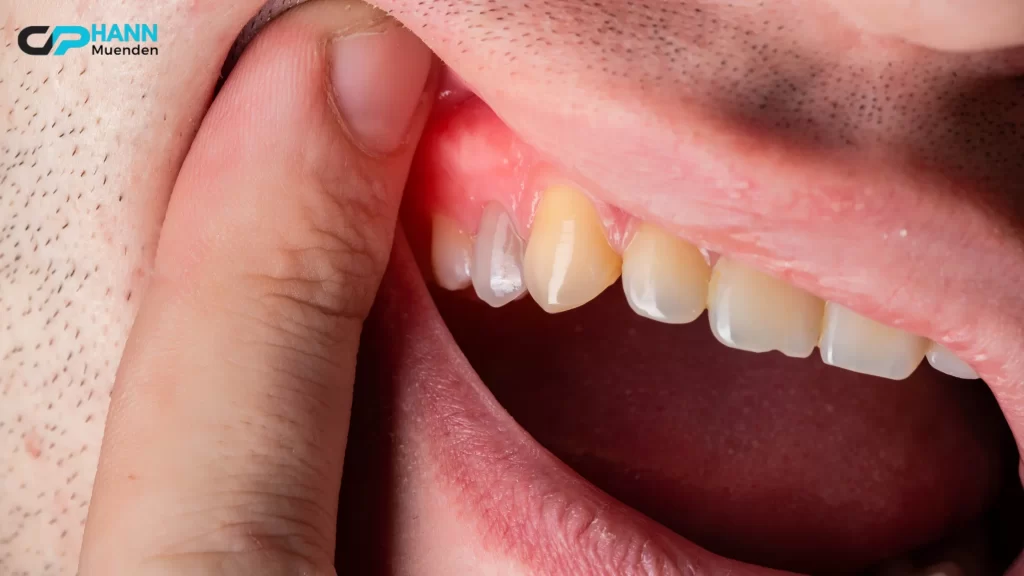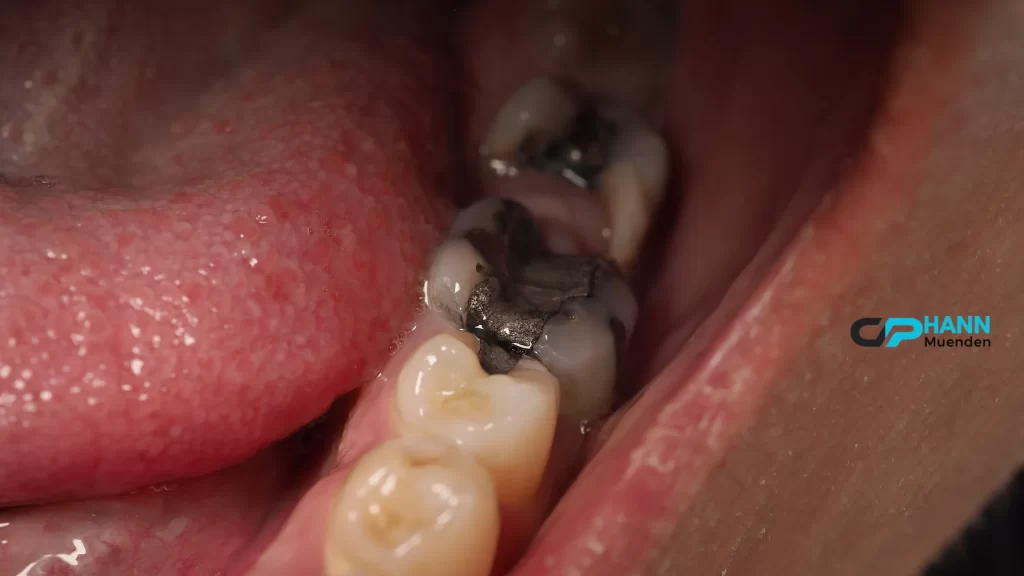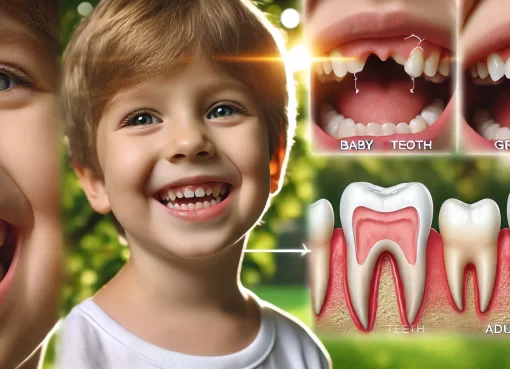How Long Until a Tooth Infection Kills You? Learn Now

Table of Contents
Tooth infections can start out as a minor inconvenience, something as simple as a toothache or gum irritation. However, when left untreated, they can escalate into a life-threatening emergency. So, how long until a tooth infection kills you? The answer depends on several factors, including how fast the infection spreads and whether you get treatment. In this article, we’ll explore the hidden dangers of tooth infections, the symptoms to watch out for, and why prompt action is crucial to protecting your health—and potentially saving your life.
What Is a Tooth Infection?

A tooth infection, or dental abscess, occurs when bacteria invade the soft tissues of the tooth or gums. This bacterial invasion leads to the formation of pus, a thick fluid that accumulates in response to the infection. Tooth infections typically begin in one of three places:
- Periapical Abscess: Occurs at the tip of the tooth’s root and often starts with a cavity that spreads to the pulp.
- Periodontal Abscess: Develops in the gums and can result from gum disease or injury to the gum tissue.
- Gingival Abscess: Forms in the gum tissue and may arise from a foreign object lodged in the gum.
Regardless of where the infection starts, it can quickly spread if left untreated, reaching areas like the jawbone, neck, and even the bloodstream.
Symptoms of a Tooth Infection You Shouldn’t Ignore

It’s crucial to recognize the symptoms of a tooth infection early on, as delaying treatment increases the risk of severe complications. Here are the warning signs that should never be ignored:
- Severe toothache: A constant, throbbing pain that doesn’t go away.
- Swelling: Your face, gums, or jaw may swell up, indicating the infection is spreading.
- Fever: A high temperature is a sign that your body is trying to fight the infection.
- Pus discharge: If you notice a bad-tasting discharge in your mouth, this could be pus leaking from the infection.
- Difficulty swallowing or breathing: This is an emergency and could indicate that the infection is spreading to the throat or lungs.
Each of these symptoms signals a tooth infection that’s progressing and could lead to serious health issues. So how long until a tooth infection kills you? The moment it starts spreading to other areas of your body, time becomes critical.
How Can a Tooth Infection Spread to Other Parts of Your Body?

Bacteria from a tooth infection don’t stay localized. If the infection isn’t treated, it can spread through the blood and lymphatic systems to other parts of the body. This can cause serious health issues, such as:
- Ludwig’s Angina: A severe, life-threatening skin infection that occurs in the floor of the mouth, neck, or jaw. It can cause breathing difficulties and requires immediate medical attention.
- Cavernous Sinus Thrombosis: A rare but serious condition where the infection spreads to a vein at the base of the brain, leading to stroke-like symptoms.
- Brain Abscess: A pus-filled swelling in the brain that can develop when a tooth infection spreads through the bloodstream or sinuses.
Each of these complications can become deadly if not treated quickly, leading to permanent damage or even death.
Also Read: Why Some People Keep Their Wisdom Teeth—Should You?
How Long Does It Take for a Tooth Infection to Become Dangerous?
The time it takes for a tooth infection to become dangerous depends on several factors:
- Individual health: Those with weakened immune systems, such as diabetics or the elderly, are more vulnerable to rapid spread.
- Type of bacteria: Some bacterial infections are more aggressive than others.
- Location of the infection: Infections near sensitive areas, such as the sinuses or throat, can spread faster.
In some cases, people experience life-threatening symptoms within days, especially if the infection reaches the bloodstream. In other cases, it can take weeks before serious complications arise. But the answer to “how long until a tooth infection kills you?” depends largely on how quickly the infection spreads to other areas like the brain, heart, or lungs.
The Dangers of Sepsis from a Tooth Infection
Sepsis is a serious and life-threatening condition that occurs when your body has an extreme response to infection. When bacteria from a tooth infection enter your bloodstream, it can trigger sepsis. Symptoms of sepsis include:
- High fever or chills: This indicates your body is fighting a widespread infection.
- Rapid heart rate: Your body is working harder to pump blood and fight the infection.
- Confusion or disorientation: This signals that your brain is being affected by the infection.
- Breathing difficulties: Shortness of breath can occur as the infection spreads.
If sepsis progresses, it can lead to organ failure, septic shock, and death. Sepsis is a medical emergency, so it’s critical to seek help immediately if you suspect that a tooth infection has spread.
Also Read: How Long Does Swelling Last After Wisdom Teeth Removal? Shocking Truth Revealed
Can a Tooth Infection Cause Brain Damage?
One of the rare but severe complications of an untreated tooth infection is a brain abscess. This can occur when the infection spreads through the sinuses or bloodstream to the brain, causing a localized collection of pus. Symptoms of a brain abscess include:
- Severe headaches: Often accompanied by vomiting or visual changes.
- Fever and chills: Another sign of widespread infection.
- Seizures: The brain’s electrical activity becomes disrupted due to pressure from the abscess.
- Altered mental state: Confusion, difficulty speaking, or weakness in one part of the body.
Brain abscesses require immediate surgical drainage and antibiotic treatment. Without prompt intervention, they can lead to permanent brain damage or death. While it’s rare for a tooth infection to reach the brain, it’s a risk that should not be taken lightly.
Why Early Action Could Save Your Life
Treating a tooth infection early is the best way to prevent it from becoming life-threatening. Here’s why acting fast can make all the difference:
- Prevents the spread: Immediate treatment, such as antibiotics or drainage of the abscess, can stop the infection from spreading to other parts of your body.
- Reduces pain and suffering: The longer you wait, the more painful and dangerous the infection becomes.
- Lowers treatment costs: Treating an infection early is typically less expensive than dealing with complications like hospital stays, surgeries, or sepsis treatment.
- Prevents permanent damage: Infections left untreated can lead to the loss of teeth, damage to the jawbone, or even the need for facial reconstruction surgery.
What Happens if You Ignore a Tooth Infection?
Ignoring a tooth infection is a serious risk. As the infection spreads, it can cause permanent damage not only to your teeth and gums but to other parts of your body. Potential outcomes include:
- Jawbone damage: Infections can eat away at the jawbone, leading to tooth loss or the need for surgery.
- Facial swelling and disfigurement: Severe infections can cause significant swelling in the face, neck, and mouth.
- Hospitalization: Many people with untreated infections end up in the hospital, requiring emergency surgery or intensive care.
The more you delay treatment, the greater the risk of severe consequences. In some cases, ignoring a tooth infection can be fatal.
How to Prevent Tooth Infections
Fortunately, preventing a tooth infection is easier than you might think. Follow these simple steps:
- Brush twice daily: Use fluoride toothpaste to keep your teeth and gums healthy.
- Floss daily: Cleaning between your teeth helps prevent bacteria from building up.
- Regular dental checkups: Your dentist can spot potential problems before they become serious.
- Eat a healthy diet: Limit sugary foods that can cause cavities, and choose foods that promote healthy teeth and gums.
- Address tooth pain early: Don’t wait for a minor problem to become a serious infection—visit your dentist at the first sign of trouble.
By following these steps, you can reduce your risk of developing a tooth infection and avoid the severe consequences that can come with it.
Also Read: How Long Until a Tooth Infection Kills You? Learn Now
When to See a Doctor
If you have any symptoms of a tooth infection, it’s important to see a dentist as soon as possible. However, if you experience more severe symptoms like difficulty breathing, swallowing, or facial swelling, you should head to the emergency room immediately. These are signs that the infection is spreading and becoming life-threatening. Don’t wait for things to get worse—seek help right away.
How Long Until a Tooth Infection Kills You?
So, how long until a tooth infection kills you? The timeline can vary from person to person. Some people may develop life-threatening complications within days, while others may experience a slower progression over weeks. The critical factor is how quickly the infection spreads. Once it enters the bloodstream or reaches vital organs, the risk of death increases significantly.



